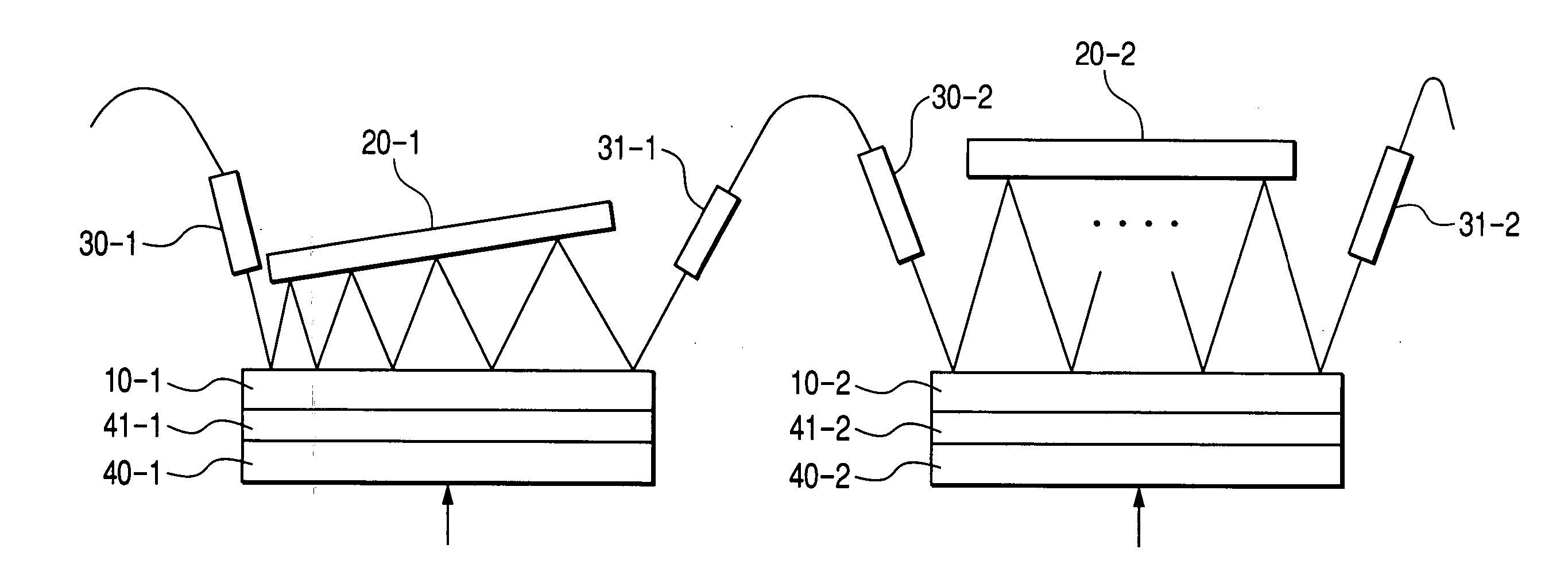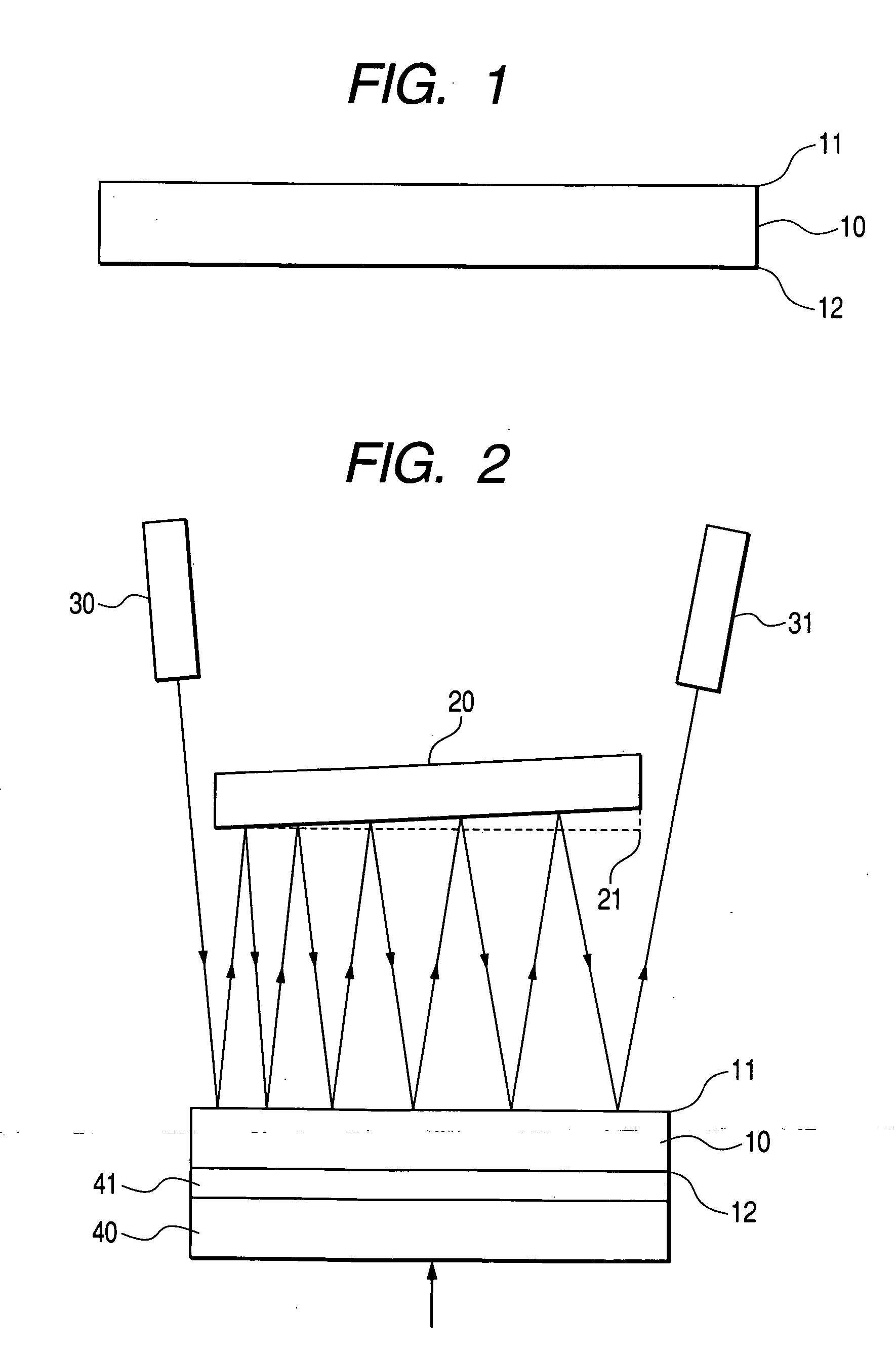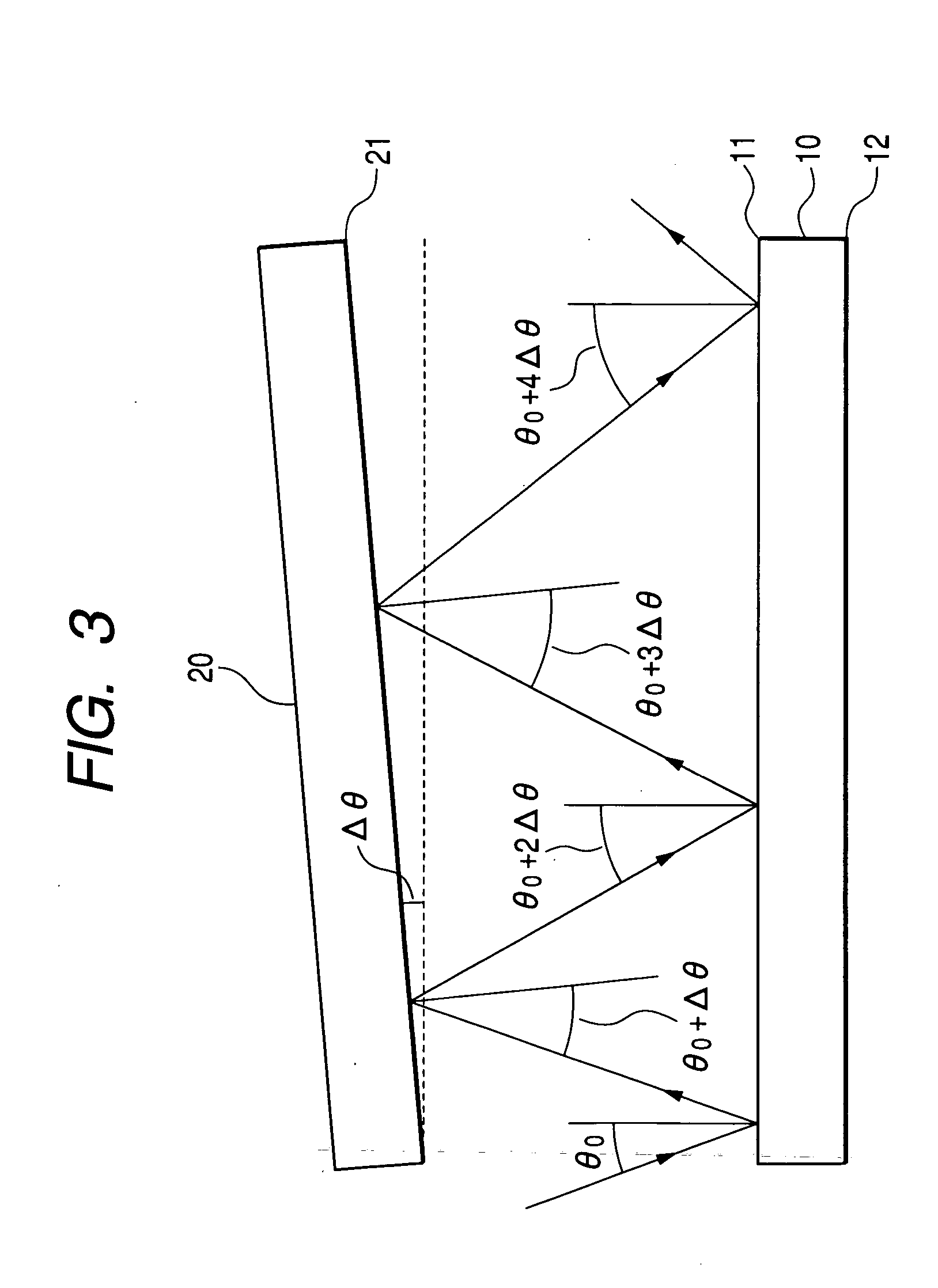Variable dispersion compensator
a compensator and variable technology, applied in multiplex communication, instruments, optical elements, etc., can solve the problems of inability to easily produce, inferior gratings to dispersion compensation fibers in transmission characteristics, and various problems of conventional dispersion compensators, etc., to achieve low optical loss, reduce the effect of optical loss rippl
- Summary
- Abstract
- Description
- Claims
- Application Information
AI Technical Summary
Benefits of technology
Problems solved by technology
Method used
Image
Examples
first embodiment
[0061] Embodiments of the present invention will be described in detail below using the accompanying drawings. First, an etalon is described. A structural view of the etalon is shown in FIG. 1. The etalon is a precisely parallelized planar plate 10 having upper and lower faces coated with reflecting films 11, 12. Metal films made of gold, silver, or other high-reflectance metallic materials, dielectric multi-layer films, or the like are used as the reflecting films. In particular, an etalon having ideally a reflectance of 100% on one face is called the GT etalon, which was named after Gires and Tournois, the proposers. In reality, however, it is difficult to obtain a reflectance of 100%, so the reflecting films may be allowed to have a reflectance of at least about 90%. In addition, the reflectance of one reflecting film does not need to be too high if the film is to be used for dispersion compensation, and as a more specific value will be shown hereinafter, the reflectance does not...
second embodiment
[0089] In another variable dispersion compensator of the present invention, light is obliquely admitted into an etalon and then reflected between the etalon and a mirror several times before being received by a collimator. Therefore, excessive loss and an excessive loss ripple are caused by each reflection from the etalon. This phenomenon will be described using figures and numerical expressions.
[0090] Main examples of experimentally obtained wavelength characteristics and loss characteristics are shown in FIGS. 34 and 35. Differences between both figures are due to differences in horizontal positions of collimators. In experiments, total reflection from the mirror was repeated four times (k=4) with mirror angle Δθ set to be almost equal to 0. It can be seen that although FIGS. 34 and 35 do not differ too greatly in dependence of dispersion on wavelength, these figures significantly differ in dependence of loss on wavelength. The dispersion characteristics shown in FIGS. 34 and 35 ...
PUM
 Login to View More
Login to View More Abstract
Description
Claims
Application Information
 Login to View More
Login to View More - R&D
- Intellectual Property
- Life Sciences
- Materials
- Tech Scout
- Unparalleled Data Quality
- Higher Quality Content
- 60% Fewer Hallucinations
Browse by: Latest US Patents, China's latest patents, Technical Efficacy Thesaurus, Application Domain, Technology Topic, Popular Technical Reports.
© 2025 PatSnap. All rights reserved.Legal|Privacy policy|Modern Slavery Act Transparency Statement|Sitemap|About US| Contact US: help@patsnap.com



